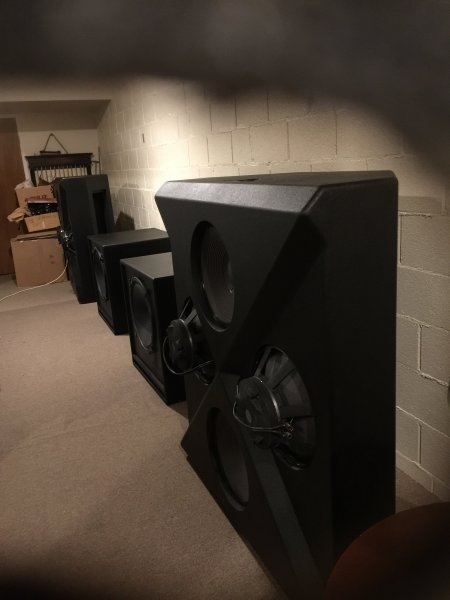Thank you for your reply, but I might have been unclear in my question. I’m not asking about combining ported midrange drivers and ported bass drivers. I’m asking about combining ported woofers in the big Wilson speakers going down to 20 or 25 Hz with ported subwoofers going even below that frequency range.
From the point of your comment a few posts up about ported drivers emitting a direct wave and a slightly delayed wave, doesn’t combining ported woofers with ported subwoofers effectively create four slightly different versions of those low frequencies?
Ron, you have it correct that you create multiple sources. But what isn't true is the belief that all the audiophiles are into, in that it matters at all for fidelity. That is simply wrong, the wavelengths are extensively too long for it to matter. The human ear will
never hear the difference in timing. If it could, then having two bass drivers would be just as bad as a port, for fidelity. In fact having anything besides a single driver would be, and even that would be limited to a handful of frequencies to prevent this small difference. What I'm getting at is that it's not a concern. Everyone's belief in timing and such that people keep going over is mumbo-jumbo in the bass region and absolutely irrelevant. We're talking parallel to flat earthing. In fact if you want to have a matched impulse response you need to move the subwoofer closer to you, not near mains. But as I've been saying, you're not going to hear it because it's dominated by every other factor. It's dominated by the fact that all the cues for low bass comes from much higher frequencies.
But what Gary and I have been saying is that while a port is not a problem, it often has a different character than sealed. The Q of the subwoofer will affect this, and so will the tuning frequency. Ported typically have a lower Q, btw. I'm probably less opposed to mixing ported with sealed than Gary happens to be. Personally I think it can be done with some subwoofers - you may also want the option of being able to plug the port on some. What I really don't like is that ported boxes are much larger (than DSP sealed).
Why do you want even bass response? Because that's what makes bass sound articulate, and prevents a boomy sound. It will sound natural when it doesn't transition from wimper to whomp constantly.
So let's get back to why I wouldn't recommend two more towers. Here's a look at your room.

As you can see your primary concern modes are in the 20hz region. This exactly where you have to cross the subwoofers with the bass towers. Having the towers positioned on each side, like the bass towers, will only serve to strengthen these resonances (modes). They're simply too long of frequencies to offset the subwoofers enough on that side of the room behind or near the Pendragons with a stereo configuration.
Now if you use a swarm style setup you could have one subwoofer in the middle, near the front wall. It won't be perfect, but it'll be better. Then placing another 3 subs around the room will help prevent you from building stronger modes & nodes, and allow integration. Why is that important? Well, because the odds that you have modes & nodes in the listening position are fairly probable - well, expected. With towers you'll end up having to turn the volume up to get what you want on one album, and then down on another.
There's a secondary reason for why a swarm will work as opposed to towers. That's because the openings in your rooms will create more modes below 23hz as lower frequency waves go through them, as those sub 20hz frequencies see a much larger room. So as you develop modes and nodes under 20hz because of the extended room boundaries in the openings, you'll have some more modes & nodes in the listening area. A swarm will smooth out the bass as you find the optimal setup with it, where as the towers will fight you.
If you did not have openings in the room you'd be able to cross in the 20hz region without the consequences being too bad, by having the subwoofer behind you most likely to try and land it between modes & nodes of the Pendragon's bass towers. That single subwoofer would just need to be very powerful and play low. It would work ok because the smaller a room gets the higher the starting frequency of modes will be - so that under 20hz wouldn't have modes and a subwoofer would simply act like an omni directional device. Well, that's the idea, it may not be absolutely perfect but it does work well if the situation presents itself.
I'm going to post some thoughts on subwoofer selection in a minute here.



